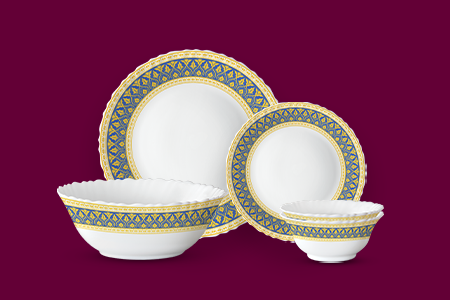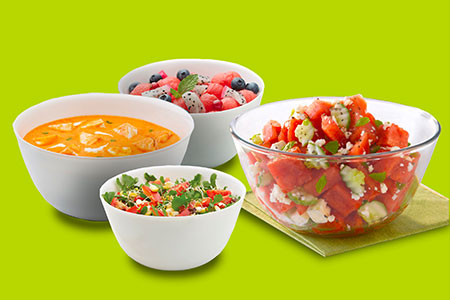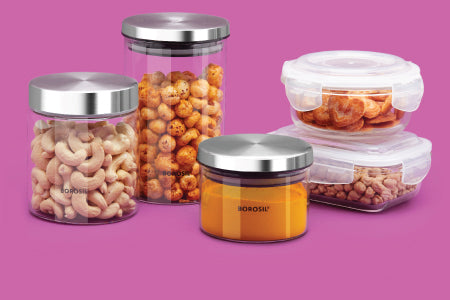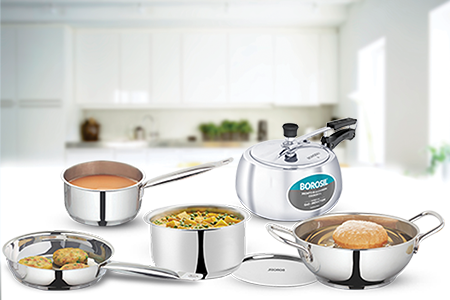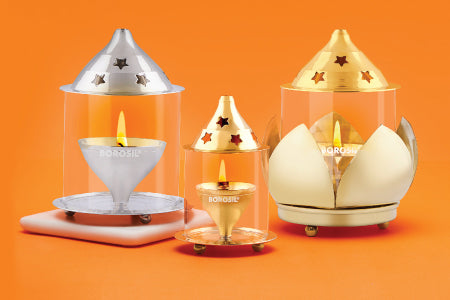
Poha Recipe For Breakfast
Quick Poha Recipes From Different Parts Of India
For ages, poha (flattened rice) has been considered an ever-consistent breakfast dish for those always running on a tight schedule. Also, throughout the day, people across the Indian subcontinent continue to enjoy poha in their own preferred variations. Whether it is Kanda Poha from Maharashtra or Indori Pohe from Indore, the recipes are fulfilling in their own way. Easy to make, less on calories and keeps one full for long!
4 Must Try Poha Recipe From Different Parts Of India
Here is a list of interesting recipes from different parts of India for those wondering how to make poha with a variety. Each has a different back story and taste to learn and enjoy.
Kanda Poha
Kanda poha is a popular Maharashtrian breakfast cuisine, with kanda (onion) being the most prominent among all other poha ingredients. Here is the recipe list for Kanda Poha.
• 1.5 cups poha
• 1 teaspoon sugar and salt as required
• ¼ teaspoon of turmeric powder
• 2 tablespoons of oil
• ½ teaspoons of mustard and cumin seeds
• 1 finely chopped medium-sized onion
• Peanuts (optional)
• 1 green chilly
• 8 - 9 curry leaves (optional)
For the preparation part, here is what you need to do:
Step 1: Soak the poha in a bowl for 15 minutes and drain the water. Add turmeric, salt and sugar to the same and mix them all using a spoon.
Step 2: Put a kadhai on the stove and add oil. Start by adding the mustard seeds. When these will start to splutter, add the cumin seeds. Then add the onion and continue to saute until they are soft and translucent.
Step 3: Now add the curry leaves and green chillies (chopped). Saute everything in low heat.
Step 4: Now add the poha and mix it all. Check the taste or add more salt and sugar.
This poha recipe is easy and fulfilling to have for breakfast. If you love peanuts, you can add the already roasted ones available, or roast them yourself!
Indori Poha
The Indori Poha recipe is a popular delicacy from Indore, which the locals mostly enjoy as a street food snack along with jalebi. Here is a list of the ingredients needed.
• 2 cups poha
• 1 chopped green chilli
• 1 lemon
• ¼ cup masala boondi
• Chopped onions ⅓ cup
• ¼ cup Indori sev
• ¼ cup coriander leaves, chopped
• Special jeeravan masala made of: ¼ teaspoon coriander and cumin powder, ¼ teaspoon garam masala and red chilli powder, black salt,1 pinch and 2 pinches of ginger powder.
• 2 tablespoons oil
For the preparation part, these are the steps included:
Step 1: Rinse the poha and get rid of all the impurities. Then transfer it into a mixing bowl and sprinkle ¼ teaspoon turmeric powder, 2 tablespoons of sugar and salt.
Step 2: Heat 2 tablespoons of oil in a pan on low to medium flame. Now add mustard and fennel seeds one after the other. Continue adding green chilli, onions and curry leaves as per convenience. And stir them all for a few minutes.
Step 3: Now add the poha, keeping the flame low, and continue with the mixing part. Cover the kadhai/pan with the lid that comes along and leave the poha in low heat steam for one to two minutes. Switch off the gas and transfer the poha into a nice serving bowl.
Your complete, wholesome Indori Pohe is ready. While serving, top it up with some raw chopped onions, coriander leaves and jeeravan masala.
Curd Poha
This is another popular poha breakfast recipe from Bengal, locally known as ‘doi chire.’ It is easy to make, gets ready in just 10 minutes and offers the perfect dose of refreshment for the busy summer days. Here is all that you need for the same:
• ½ cup poha
• 1 cup yoghurt
• 2 tablespoons of milk (optional)
• Sugar, jaggery powder, or honey to taste
• 1 sliced banana
• Handful of nuts and raisins
• Any seasonal fruit of your choice
You get to eat the poha in its raw form, mixed with the yoghurt. Here is how it is done.
Step 1: Rinse the poha in water, ensuring it is completely clean.
Step 2: Add it to a bowl along with sugar or honey as you like. If you prepare it in the traditional Bengali style, add sugar drop candies or ‘batasha.’ This will add some extra crunch.
Step 3: Now add yoghurt, banana and the other poha ingredients. Mix aloof them together.
Step 4: Garnish with dry fruits or have it just like that.
From children to adults, this recipe is a personal favourite for all.
Dadpe Pohe
Dapde Pohe is just like Kanda Poha, minus the additional ingredient of coconut. Here, the poha is not steamed or rinsed. Instead, one eats them raw. Here is the complete ingredient list for Dapde Pohe. You need:
• 2 cups of poha
• 1 cup of freshly grated coconut
• 1 medium-sized finely chopped onion
• 2 green chillies
• ⅓ cup of coriander leaves
• ½ tablespoon salt
• 1 medium-sized lemon
• 2 tablespoons of coconut water
• ½ teaspoon mustard seeds
• 1 tablespoon oil
• 2 curry leaves
• ¼ cup peanuts
Now, to begin with, pour the poha on a plate. And continue with the following process.
Step 1: Add onions, fine sugar, grated coconut, lemon juice, peanuts, coriander leaves and salt to taste.
Step 2: Now mix them all with a spoon or spatula. If you see the poha still in a dry stage, add some coconut water or normal water; it also goes well.
Step 3: Mix it up again and leave it for 10 minutes for the poha to naturally soften.
This can be a great evening snack for you to enjoy if raw onions are something you do not like having in the morning.
Conclusion
Poha, commonly known as chivda, chire, avalakki or aval, is a versatile item for your daily meals. As per your mood, you can spice it up or tone it down, completely your call. So wait no more, try one today, and leave some for your family to taste.
Frequently Asked Questions
1. Is poha gluten free?
Yes! Poha is naturally gluten free. Also, while cooking, skip using the regular hing (asafoetida) on a strict diet.
2. What is the best time to try the poha recipe?
You can prepare poha for breakfast, lunch and as an evening snack.
3. Is poha healthier than rice?
One complete poha bowl with vegetables added has 250 calories, while a rice bowl in a similar quantity has 333 calories. That suffices how poha is a healthier option than rice.



